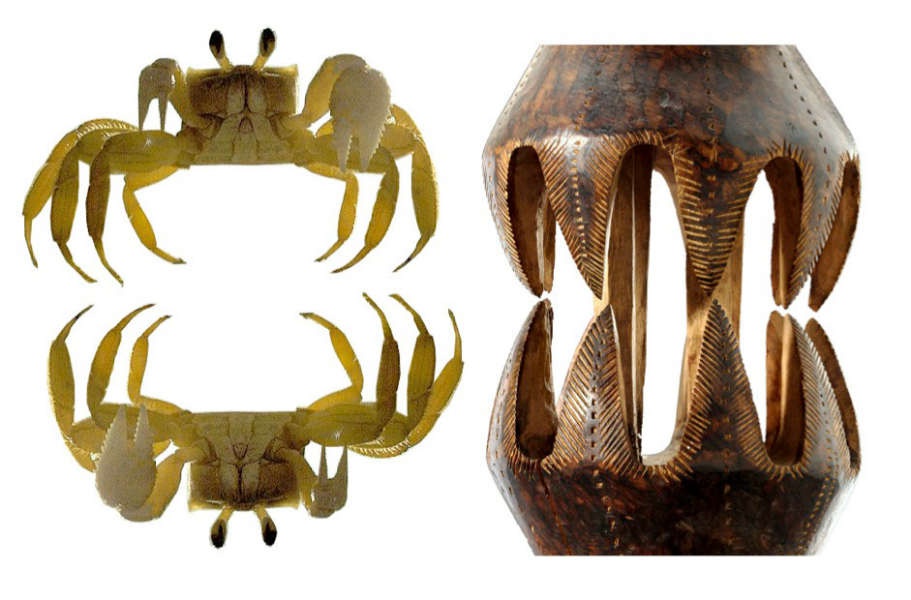
Two years ago I did a study on these amazing but enigmatic objects from the Eastern Congo. Biebuyck placed these instruments within a Pere context; according to Julien Volper they also could be found among the Nande. The exact use and meaning of these famous ‘trumpets’ remains unknown. According to Hoffman these wind instruments fall within the category of isumba, and are found among the Tangi subgroup of the Nande (under the names mulimu, kanyamakende and kazoni). They are generically called mulimu and have specific names derived from the place and the manner in which they are carved. During the initiation, the structure of the trumpet and the meaning of the sounds it produces were explained and interpreted. Those initiated to its secret received special scarifications on the belly or upper arm, which were assumed to be the marks of mulimu. The incised designs on the trumpets themselves resemble these tattoos. Biebuyck believes that they are related to the anthropozoomorphic musical instruments of the Nyanga (called mumbira), and connected with the Pygmy molimo-initiations. In almost all literature they are defined as trumpets, though they should be classified as a different category of aerophane or wind instrument, producing a various scope of sounds with the vibrating air contained within the instrument.
Similar to the Nyanga’s mumbira the possible connections between sculptural form and semantics of this Pere or Nande aerophone are not clear. We can postulate that this complex sculptural form is constitued of a conglomerate of several abstractions derived from the surrounding fauna and flora. The exact nature of this form will probably remain unknown forever. Analogous with the mumbira it will have been the central object of a male initiation.This unusual and mysterious object became the sacred and distinctive patrimony of a specific group of initiated men. It success might explain the existence of several examples. As an initiation object, it probably helped to consolidate the bonds between a kinship group and could remedy disease, infertility, lack of hunting success, and other misfortunes. It was a secret object used during the initiation and its appearence (and, in some cases, audition) included the learning of symbolic interpretations. The strange forms of the trumpet evoked the mysterious, the unlikely, the indescribable and unpredictable aspect of the forest; they formed a symbolic system that aimed at presenting the initiates with an ambiguous, complex, somewhat undefinable being. During the initiation an expert singer murmured, hummed, sung and talked into the aerophone while he or his helpers created with cupped hands various sound effects from the circular aperture which was used as a sound box. Analogous with the Mbuti Pymies’ molimo horn and Nyanga’s mumbira, sounds of different animals, as well as natural sounds, were reproduced to restore and/or maintain the good will of the forces of the forest. The object thus acted as a mediator in the process of reconciliation between men and nature, as a means to preserve and restore their harmonious relation.
The open middle part has never been properly explained by scholars. There have been speculations about an iconographic link with an animal. Since the tube is not in correspondence with the open space, there is no technical explanation for it. The symbolic is very important in the isumba initiation. We know that unusual objects found in the natural environment were used as initiation objects and the preferential secret (and sacred) patrimony of associations. A wild guess might be that it represents two crabs during an act of love or rage..
